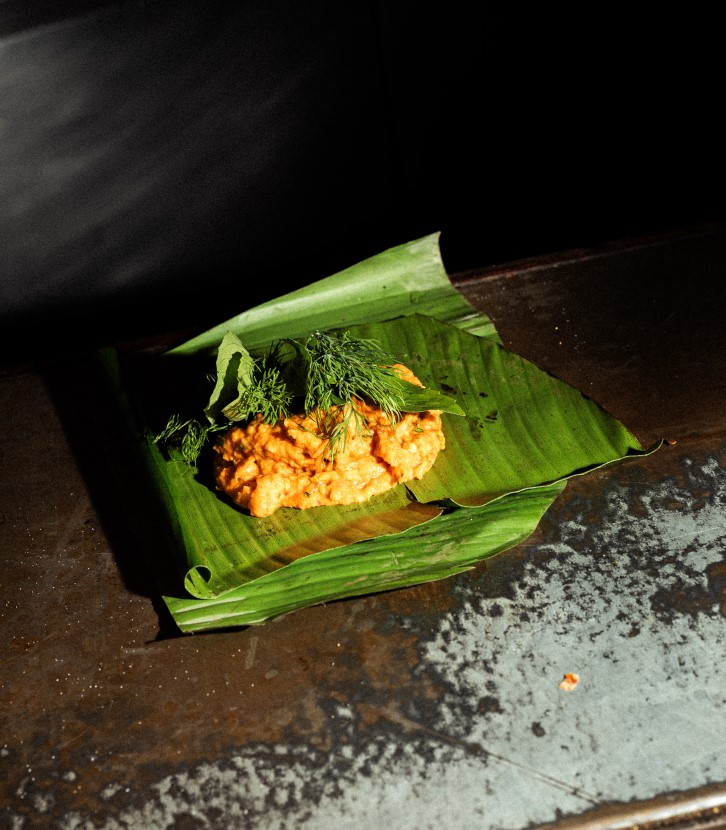Taiwan is known as the Island of Tea, with records dating back to the 18th century describing wild tea plants growing in central and southern regions. Immigrants from the coastal areas of mainland China also brought along their native tea varieties to Taiwan, and drinking tea has since become an integral part of the island’s cultural history. The tea industry is also a significant part of the economy. In 1869, British merchant John Dudd first exported Taiwanese oolong tea (Formosa Oolong) from Dadaocheng to New York, putting the island’s tea on the world map. The first half of the 20th century, during the Japanese colonial period, was the golden age of Taiwanese black tea, which was extensively exported to Europe.
RELATED: Eat Taiwanese Across The World

Tea villages are a part of Taiwan’s scenic landscape: where there are people, there is tea. The Alishan Scenic Area in Chiayi is known worldwide for its tea plantations. At elevations above 2,000 metres, high mountain tea stands as a testament to the challenges of agricultural development. Oriental Beauty tea can be found at Miaoli and Hsinchu Hills, while the Sun Moon Lake Scenic Area of Nantou is known for its fragrant Taiwanese black tea. In Pingtung's Manzhou Township, the sea breeze lends a hint of saltiness to the “Gangkou” Harbour tea, which is grown at low altitudes. Today, Taiwan boasts a diverse range of teas, from everyday thirst-quenchers to those served at refined tea ceremonies. Tea drinking is an essential cultural experience when visiting Taiwan, offering a glimpse into the country's rich traditions and hospitality.
In many restaurants featured in the MICHELIN Guide Taiwan, tea is thoughtfully designed and incorporated into the dining experience. Tea embodies the beauty of local terroir, and serious restaurateurs have gone beyond simply offering non-alcoholic beverages to give diners the opportunity to fully appreciate the flavours of Taiwan through tea while taking the whole gastronomic journey to the next level.
RELATED: The Evolving Flavour of Taiwan’s Cuisine Through the Eyes of 4 MICHELIN-Starred Restaurant Chefs

Tea and Food Pairings: A Multitude of Local Culinary Imaginings
Sho
Taiwanese tea can complement Japanese cuisine in creating delightful culinary harmony. Located in Kaohsiung, Sho is the sister restaurant of the two-MICHELIN-starred Den in Tokyo. Head chef Shoichi Fujimoto, who was the former sous chef to chef Zaiyu Hasegawa, has brought his expertise to Taiwan, combining traditional Japanese culinary artistry with Taiwanese flavours. Signature dishes include a colourful green salad and kamameshi (iron pot rice). The pairings of alcoholic beverages and zero-proof tea drinks enhance the overall dining experience.
The restaurant’s tea pairings are available as a set of five, featuring a curated selection of teas from Japan’s deep-steamed green tea (fukamushicha), and the rich and mellow Uji hojicha, to teas from several iconic Taiwanese tea-producing regions: Luye Township of Taitung, Alishan in Chiayi, and Nantou’s Lugu Township. These exquisite teas are served at low temperature in wine glasses. Different teas can also be enhanced with a touch of herbal infusion. For instance, adding sansho Japanese pepper to Alishan rooibos tea can bring an extra dimension of refreshing flavours to Japanese kappo cuisine.
RELATED: Video: A Journey through the Culinary Culture: Discovery Trip in Taiwan of Chef Duo from MICHELIN Restaurants: Q

YUENJI
With executive chef Lin Ju-wei at the helm, YUENJI explores the flavours, history, and raw ingredients of Taiwanese cuisine. This is combined with the extensive 60-year-old tea collection of POUYUENJI’s chairman, Tsai Chi-chien, featuring Nantou's Lu Gu Dongding Oolong from the early periods, Pinglin Oriental Beauty from New Taipei City, Wuyi Rock Tea, Yunnan Pu’er, and exceptional teas from around the world, creating a unique dining experience with tea and food pairings. YUENJI has thoughtfully curated a selection of teas to enhance the transition between different courses, and they are categorised into three stages: “Awakening Tea” to stimulate the palate; “Sharing Tea” to share the joys of a delicious meal; and “Gathering Tea” to commemorate cherished moments spent together. (hero image: ©YUENJI)The "Awakening Tea" features high mountain oolong tea from Lishan, characterised by its rich, full-bodied flavour and honey notes, infused with a touch of ginger juice to awaken the palate. The "Sharing Tea" comprises the Yunnan Jin Da Mo Pu'er and Tie Guanyin from the Hua Gang tea region in Nantou at an altitude of 2,600 metres, which has been traditionally rolled and roasted for a refined and elegant tea that pairs beautifully with dishes. Lastly, the "Gathering Tea" is a post-fermented Pu'er from ancient tree varieties, offering a smooth taste with woody notes and a sweet, longan-like roundness that makes it a perfect match with desserts.
At YUENJI, tea is not only served alongside food but also incorporated into the dishes themselves, such as stewed chicken soup with aged pu’er tea and bamboo fungus, and chicken terrine, aged pu'er tea. The optimal balance of tea flavours in these recipes is the result of the chef's extensive experimentation, making them well worth a try.

enPure
Established by the owner of renowned tea house ZEN ZEN THÉ, Blue Lan, and chef Wang Cai-qing, the MICHELIN-selected restaurant enPure is truly unique. At enPure, tea pairing is an integral part of the meal, with each set menu accompanied by five different teas for the complete experience. Blue Lan is an expert in creating exceptional dining experiences through food and beverage pairings. He adopts a wine pairing approach for tea, serving it at a low temperature in wine glasses. This way, the captivating aromas can be appreciated while complementing the innovative Western-style dishes served at the restaurant.

Beyond a Beverage: Tea as a Culinary Element
MINIMAL
MINIMAL is the world’s first ice cream establishment to earn a MICHELIN star with ice as the star ingredient. Deliciously magical, the eatery creates unique frozen treats while exploring the textures and flavours of ice at different temperatures.Chef Arwin Wan draws inspiration from various local beverages and teas in Taiwan for his ice cream creations. For example, he combines the robust, roasted notes of Dongding Oolong tea with toasted groats and roasted sweet potato skins to make an ice dessert oozing with nostalgic flavours. Another creation features honey-scented black tea from Hualien and Taitung, paired with longan flowers and mildly bitter sicklepod for a refined and fragrant frozen dessert. Apart from local teas, flavours inspired by Hakka Lei Cha, hibiscus tea, pu’er tea, white tea, as well as intriguing wines and spirits such as sorghum liquor, gin, and sake, are all part of Wan’s creative repertoire. At Minimal, tea is not drunk but eaten, and customers can savour the way the icy creations melt in their mouths as a multitude of exquisite flavours unfolds.

Paris 1930 de Hideki Takayama
Chef Hideki Takayama is a huge fan of Taiwanese tea. Since his first guest shift in Taiwan, he has been captivated by its wondrous flavours, which urged him to visit different tea plantations. For him, Taiwanese tea is more diverse than Japanese tea, ranging from the powerful roasted Tie Guanyin and the fully fermented pu’er, to the elegantly scented jasmine green tea and the umami-rich Sanxia Biluochun, all of which match effortlessly with the delicate style of French cuisine.
Tea can be sipped, but also gracefully incorporated into dishes. At Paris 1930 de Hideki Takayama, the tea-infused dish that stands out is undoubtedly his signature dish Marinated Vegetables with Sushi Rice. On the spring menu, this dish features over 20 layers of thinly sliced seasonal vegetables, such as dragon fruit, cucumber, and jicama, artfully stacked and accompanied by vinegared rice made with Jin Xuan tea and honey vinegar. The tea in the sauce brings a harmonious flavour to the dish, which is served with cold-brewed jasmine Jin Xuan. The restaurant’s grilled fish dish showcases a unique seasoning method, where herb oil is combined with Lishan Oolong tea powder then rubbed onto the surface of the fish, and is paired with a broth sauce and pickled fennel. In these creations, tea is the essence of the sauces and flavours.
RELATED: Hideki Takayama Falls In Love With Taiwanese Tea At Pinglin

Wok by O’BOND
Wok by O’BOND is associated with the Taiwanese tea-themed bar Tei by O’BOND. Owner Tom Liu and his team spent 10 months visiting over 100 tea plantations across various tea-producing regions in Taiwan to engage with tea masters. For Tom, tea, much like wine, is a reflection of its terroir. Thus, showcasing the unique flavours of Taiwanese regions is a key aspect of the tea-infused dining experience at Wok by O’BOND.
On the menu, “Green Rice” is a dish of rice cooked in broth with green tea and seaweed powder, allowing the refreshing tea flavour to blend seamlessly with the umami of other ingredients. A sorbet-like sparkling tea drink, crafted from Baozhong tea from Nangang, Taipei, is served between dishes. This tea of the Qingxin Oolong variety is characterised by its delicate white floral aromas, which become even more pronounced when carbonated. For dessert, Sanxia Biluochun tea with an intense soy fragrance from tea master Huang Wen-hsiung is paired with a pound cake inspired by traditional Taiwanese mung bean mooncakes. Dusted with tea powder and served with tea, this dessert creates an illusion of creamy milkiness akin to mung bean paste. To conclude each seasonal menu, the restaurant also offers aged teas collected from various tea artisans, such as the 40-year-old Shiding Zheng Cong Tie Guanyin, 30-year-old aged oolong, and 40-year-old aged Baozhong tea. Enjoyed with tea snacks, the bright acidity and herbal scent of these aged teas leave a lasting impression to cap off the meal.


















